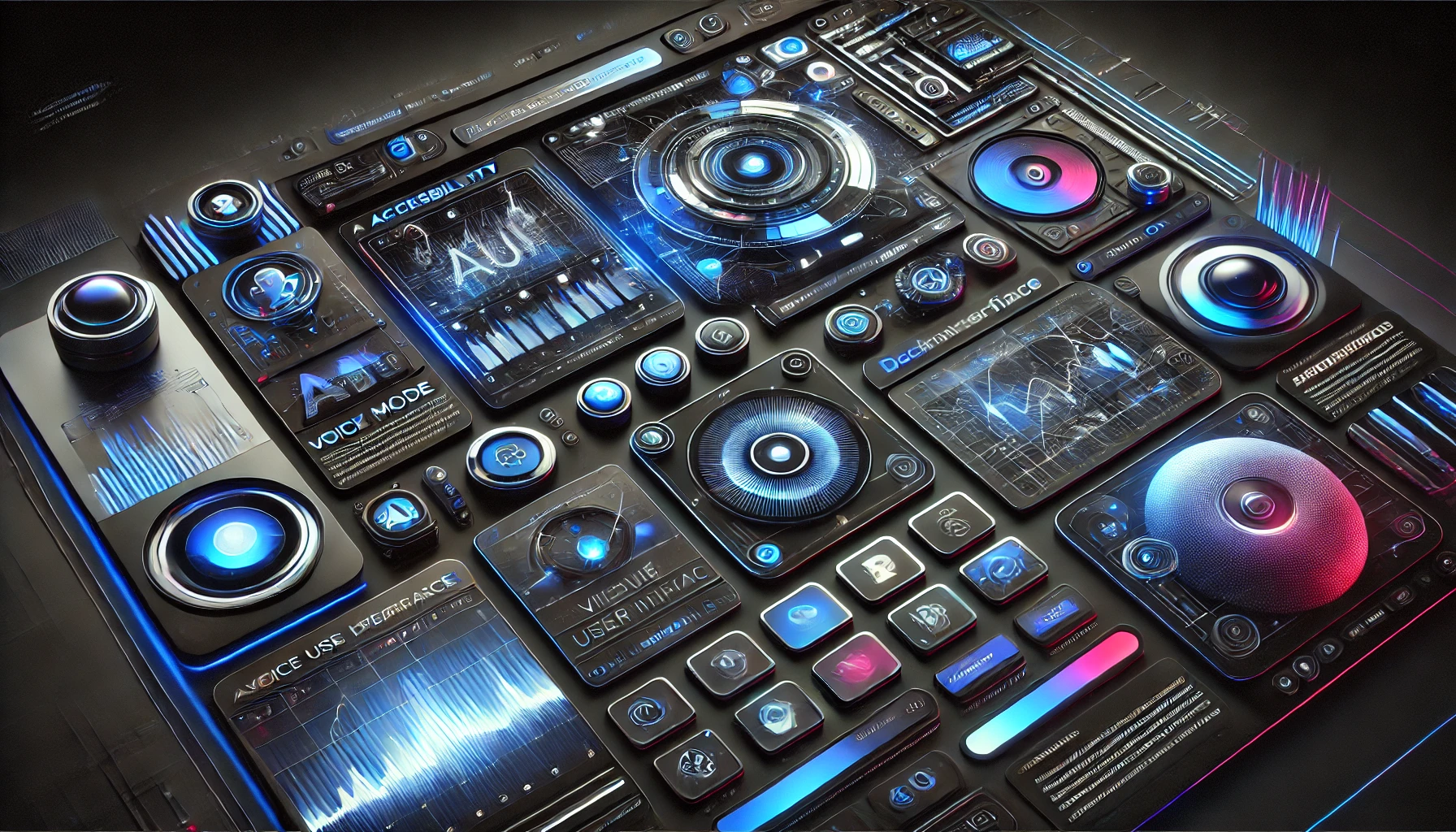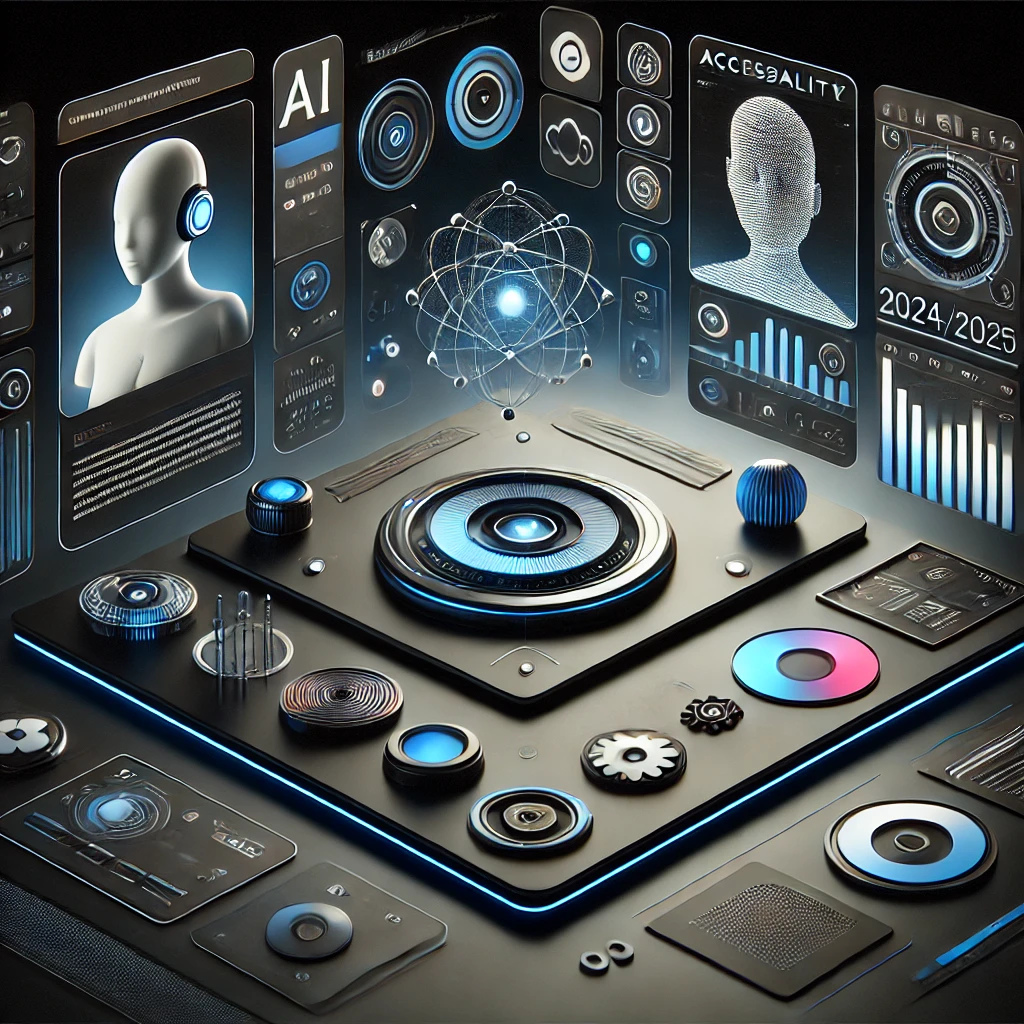
As we move into 2024 and beyond, the landscape of web design continues to evolve rapidly. With advancements in technology, changing user behaviors, and the growing importance of accessibility, designers need to stay ahead of the curve. This article explores the top website design trends for 2024/2025, providing insights into what will shape the future of digital experiences.
1. AI-Powered Personalization
AI-driven personalization has been a rising trend in recent years, but it’s set to dominate in 2024/2025. Websites increasingly use AI to tailor content, product recommendations, and even the overall user experience based on individual user behavior. This trend ensures visitors are presented with relevant information, making their experience more engaging and effective. Expect to see more dynamic content that adapts in real-time to user preferences.
2. Dark Mode 2.0
Dark mode has become a staple in web design, but the next iteration—Dark Mode 2.0—focuses on more refined and sophisticated implementations. Designers are now incorporating subtle gradients, highlights, and textures to make dark mode interfaces more visually appealing and user-friendly. This trend is particularly popular for enhancing accessibility, as it reduces eye strain and improves readability in low-light environments.
3. 3D Visuals and Interactive Elements
The use of 3D elements in web design is set to grow, offering users more immersive experiences. From 3D product models to interactive animations, these elements create a sense of depth and realism that traditional flat designs cannot achieve. Advances in web technologies like WebGL have made it easier to integrate 3D elements without compromising website performance, making this trend both exciting and practical.
4. Micro-Interactions
Micro-interactions—subtle animations or responses to user actions—will play a significant role in enhancing user engagement in 2024/2025. These small design elements, such as a button changing color when hovered over or a notification icon subtly pulsing, add a layer of feedback that makes interactions more intuitive and satisfying. The focus will be on creating smooth, almost invisible transitions that enhance usability without distracting from the content.
5. Minimalist and Content-First Design
As users become increasingly content-focused, minimalist design is making a strong comeback. The emphasis is on creating clean, uncluttered interfaces that put the content front and center. This trend prioritizes functionality and ease of navigation, with designers stripping away unnecessary elements and focusing on what truly matters to the user. White space, bold typography, and simple color palettes are key characteristics of this trend.
6. Sustainability and Eco-Friendly Design
With growing awareness of environmental issues, sustainability is becoming a critical consideration in web design. This trend involves optimizing websites for energy efficiency by reducing file sizes, minimizing the use of animations, and adopting cleaner code practices. Additionally, more websites will highlight their commitment to sustainability through design elements, such as eco-friendly color schemes and green-themed visuals.
7. Voice User Interface (VUI)
Voice search and voice commands are becoming more prevalent as users embrace smart speakers and voice assistants. The rise of VUI means that websites will need to be designed with voice interaction in mind. This involves optimizing content for voice search and integrating voice-activated navigation features. In 2024/2025, expect to see websites that are not only visually appealing but also capable of providing a seamless experience for voice users.
8. Augmented Reality (AR) Integration
Augmented Reality is transforming the way users interact with websites, especially in e-commerce and product visualization. AR allows users to experience products in their real-world environment, leading to more informed purchasing decisions. In the coming years, we’ll see a surge in AR integrations on websites, making the online shopping experience more engaging and personalized.
9. Accessibility-First Design
Accessibility has always been important, but it will become even more critical in 2024/2025. Websites that prioritize accessibility ensure that all users, regardless of disabilities, can access and interact with their content. This includes considerations like keyboard navigation, screen reader compatibility, and color contrast. As legal requirements and public awareness around accessibility grow, this trend will become a standard practice in web design.
10. Retro and Nostalgic Design
Nostalgia is a powerful tool, and it’s making a comeback in web design. Retro design trends, including bold colors, pixel art, and vintage typography, are being used to evoke a sense of nostalgia and connect with users on an emotional level. This trend is particularly popular among brands targeting millennials and Gen Z, who often have a fondness for the aesthetics of the ’80s and ’90s.
Conclusion
The web design trends for 2024/2025 reflect a blend of cutting-edge technology and a deeper understanding of user needs. From AI-powered personalization to accessibility-first design, these trends are shaping the future of digital experiences. Staying updated with these trends will not only keep your website looking modern but will also ensure that it provides a top-notch user experience.
As the digital landscape continues to evolve, embracing these trends will be key to staying ahead of the competition and delivering engaging user-friendly websites.
At Invortech, we are dedicated to staying at the forefront of these trends. Our team of experts is committed to delivering innovative, user-centered web design solutions that align with the latest industry standards. Whether you’re looking to revamp your existing website or build something entirely new, Invortech has the expertise to bring your vision to life. Let’s create a digital experience that stands out in 2024 and beyond.
Tags: #2024 Trends #Digital Innovation #UX/UI Design #Web Design #Website Development


